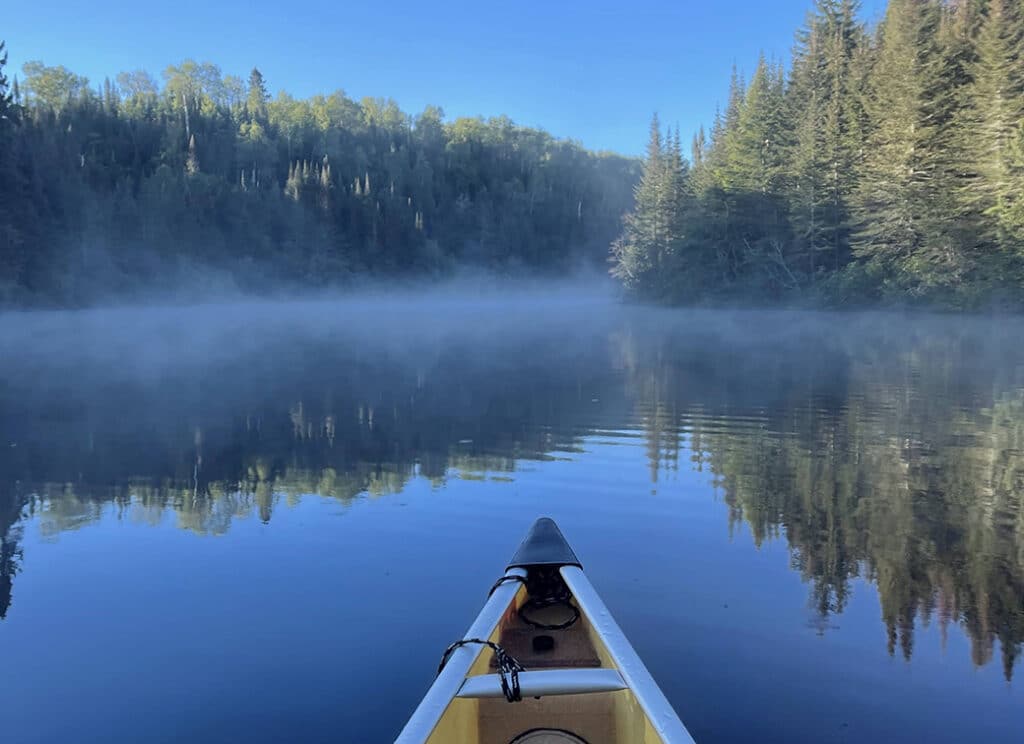
It feels like it was forever ago, and at the same time, like it was only yesterday. That day was one of those I’ll never forget. Over the previous six years, we carefully pushed the limits of our comfort zone as it pertained to the great outdoors. And now we were on our first tent camping trip in the Superior National Forest. With my spouse eager to get on the water and do some fishing, we rented a canoe for several days from a local outfitter. They suggested we portage into a neighboring lake in the Boundary Waters Canoe Area Wilderness (BWCAW) where they had success fishing recently. They got us set up with a canoe, PFDs, paddles, and a map. Then they helped us fill out our permit and showed us everything we needed to know about portaging a canoe. And before we knew it, we were off on our first-ever BWCA day trip.


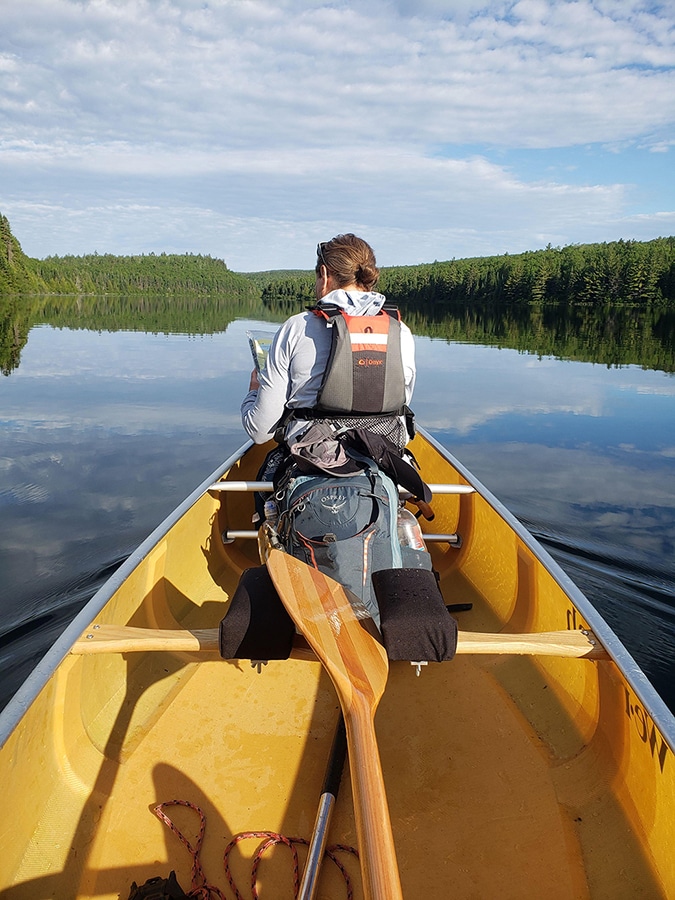
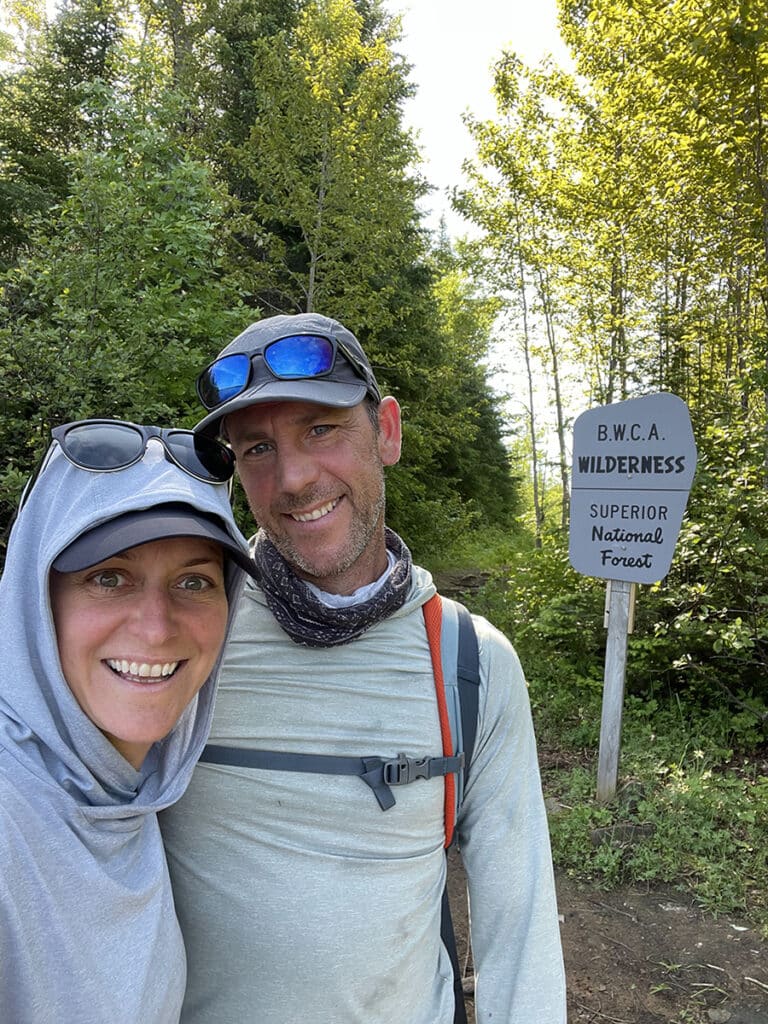

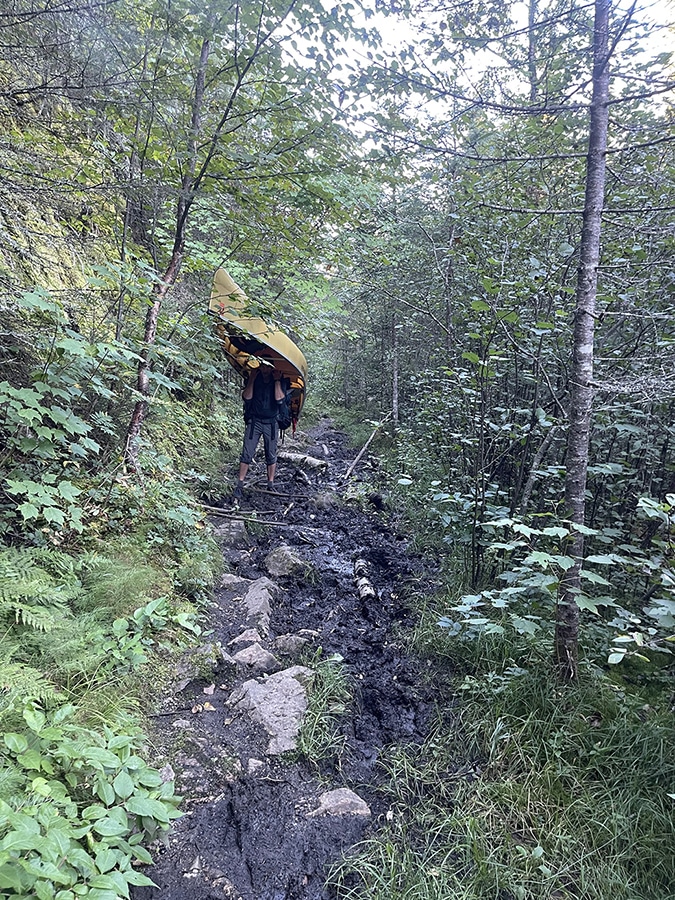
We spent nearly the entire day on that lake paddling, fishing, and enjoying a picnic lunch on a rocky peninsula. We saw a family of loons, a bald eagle, and even caught a few fish. But what I remember most about that day is that we only saw one other party of wilderness visitors. That was the day I fell in love with the quiet and solitude of the Boundary Waters Wilderness.
The two of us continued to push our limits and learn more each following year. Eventually, we did our first multi-day overnight trip. And this year we’re planning a 16-day loop through the northernmost regions of the wilderness.
I’m often asked for advice from friends who are planning their first trip and I always suggest starting with a day trip. All of this outdoorsy stuff looks a lot easier on Instagram than it actually is. My husband and I have many years and hundreds of miles under our belts now and are far from being experts. Every trip we run into unexpected challenges and learn more than we thought possible.
This will be our 15th season paddling the pristine lakes of Northeastern Minnesota. Long enough that we have some valuable wisdom to share. And at the same time, it’s fresh enough that we still remember what it was like when we were beginners. My goal for this article is to bring it all together to help you plan the perfect BWCA day trip.
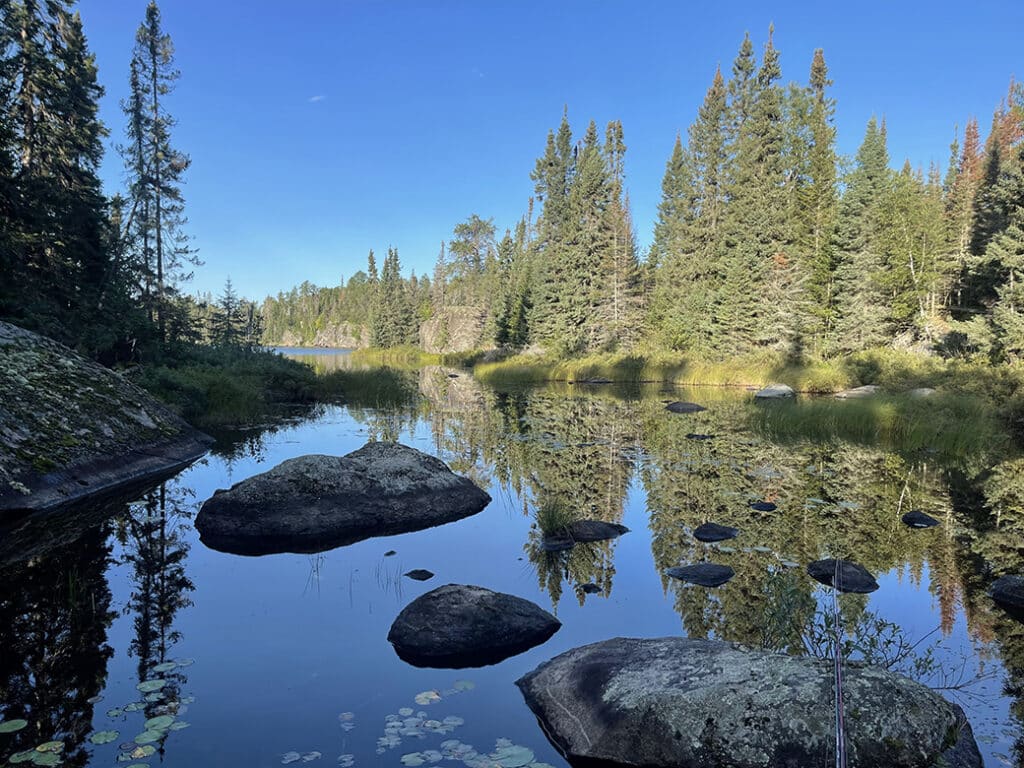
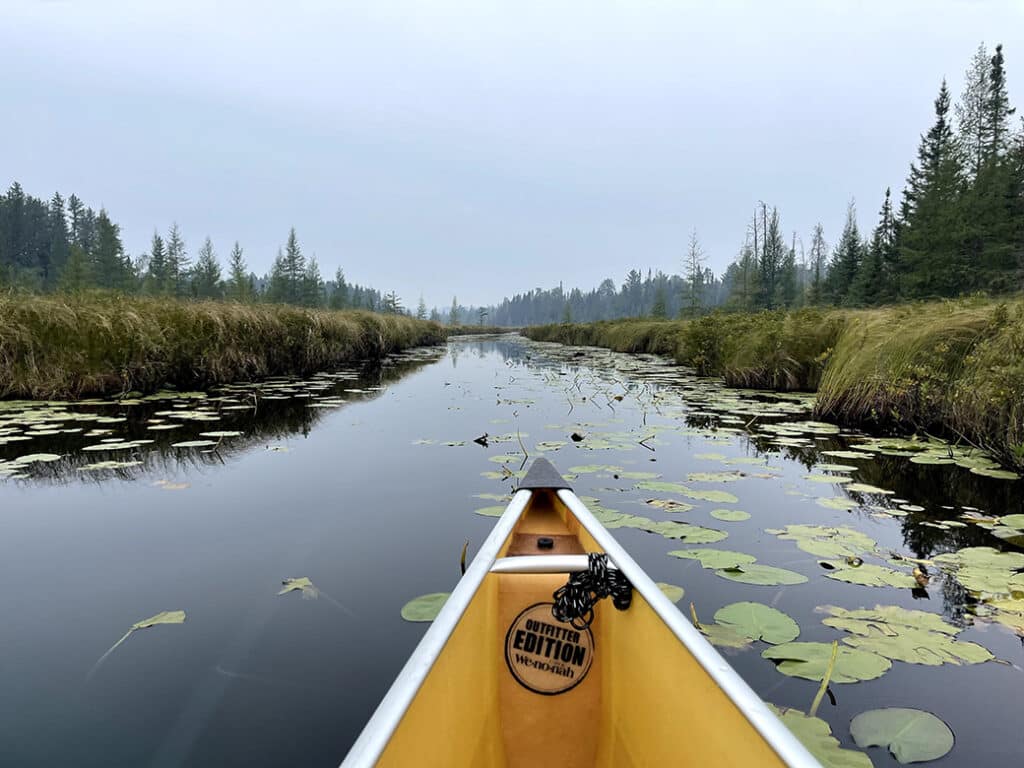
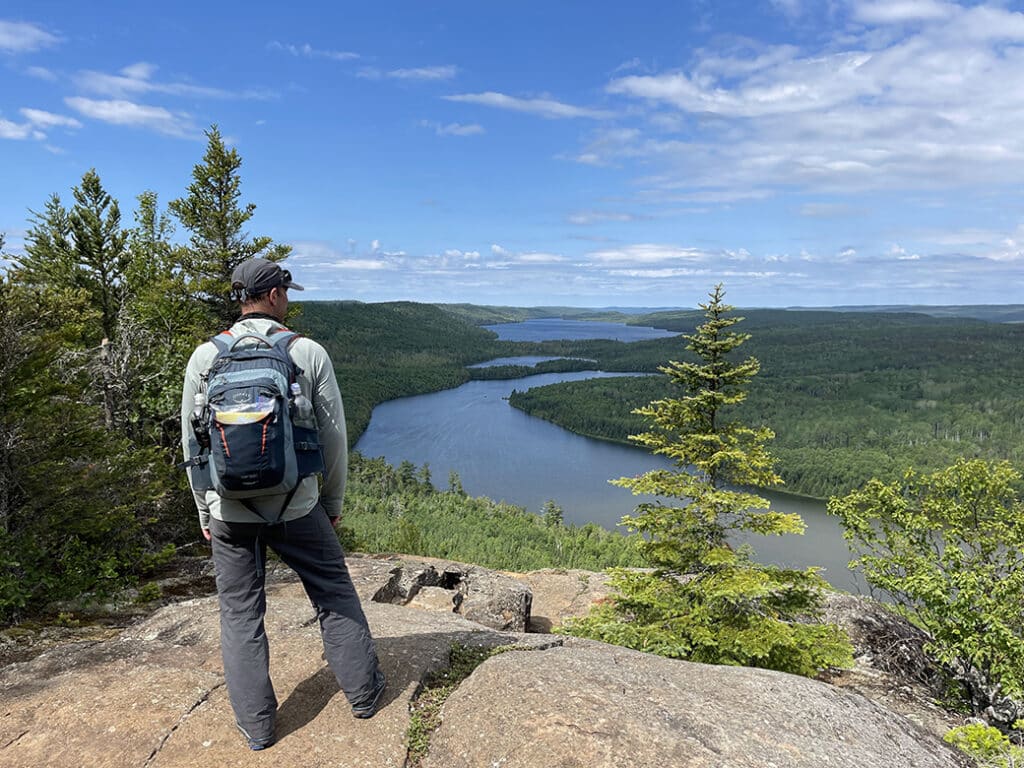
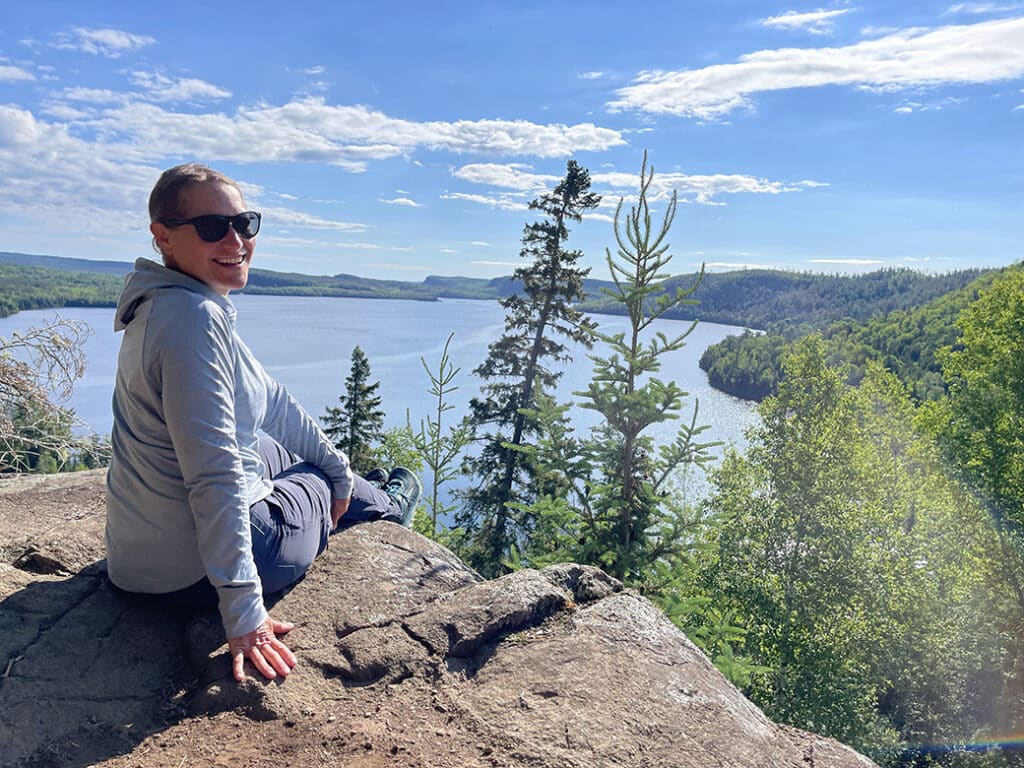
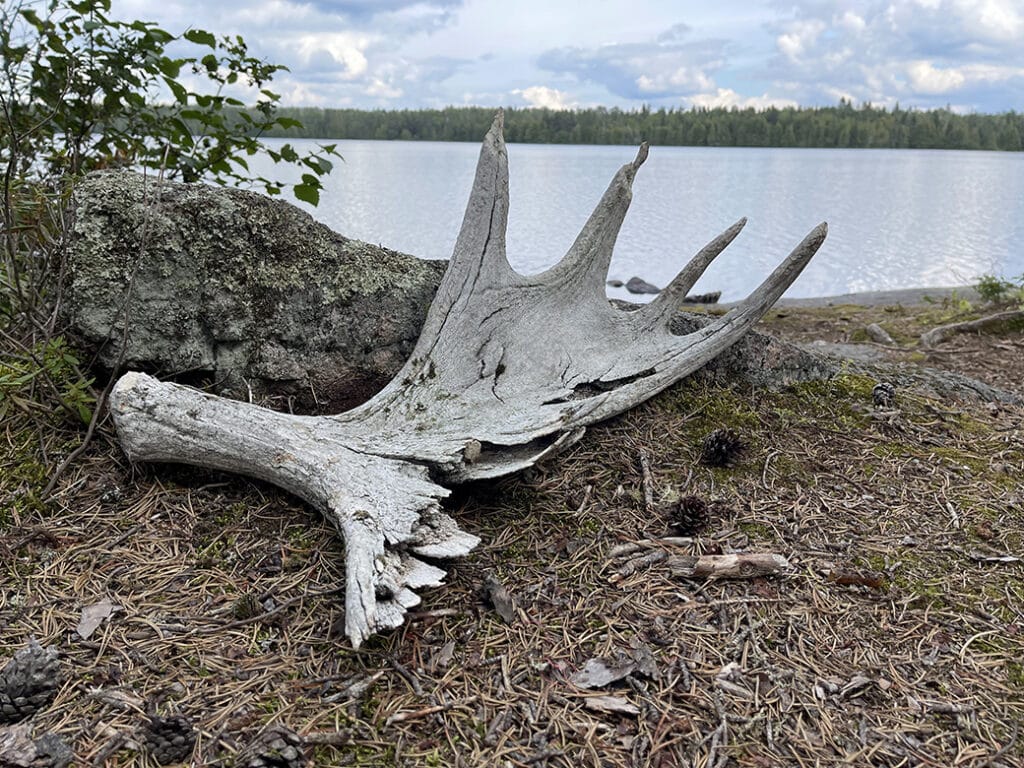
Why you should take a BWCA day trip
There are few places left on this planet where you can experience the quiet, solitude, and dark skies that the Boundary Waters Canoe Area Wilderness is known for. At least ten times a trip I look over at my husband and ask, “Do you hear that?” The “that” I am referring to is the sound of the natural world uninterrupted by man. There are no car horns, noisy construction equipment, loud music, and rarely voices to be heard. To me, it’s one of the most perfect sounds and something I want everyone to experience first-hand.
For some, experiencing what the world was like before this modern way of life during a day trip is enough. But others will be called to explore this remarkable place on a multi-day overnight adventure. If this is you, there is no better way to learn how to paddle, portage, and navigate this wild land than on a day trip. Learning the ropes without the stress of having to find a campsite and being within paddle distance from your vehicle will make your first trip into the BWCA a less stressful and more enjoyable experience.
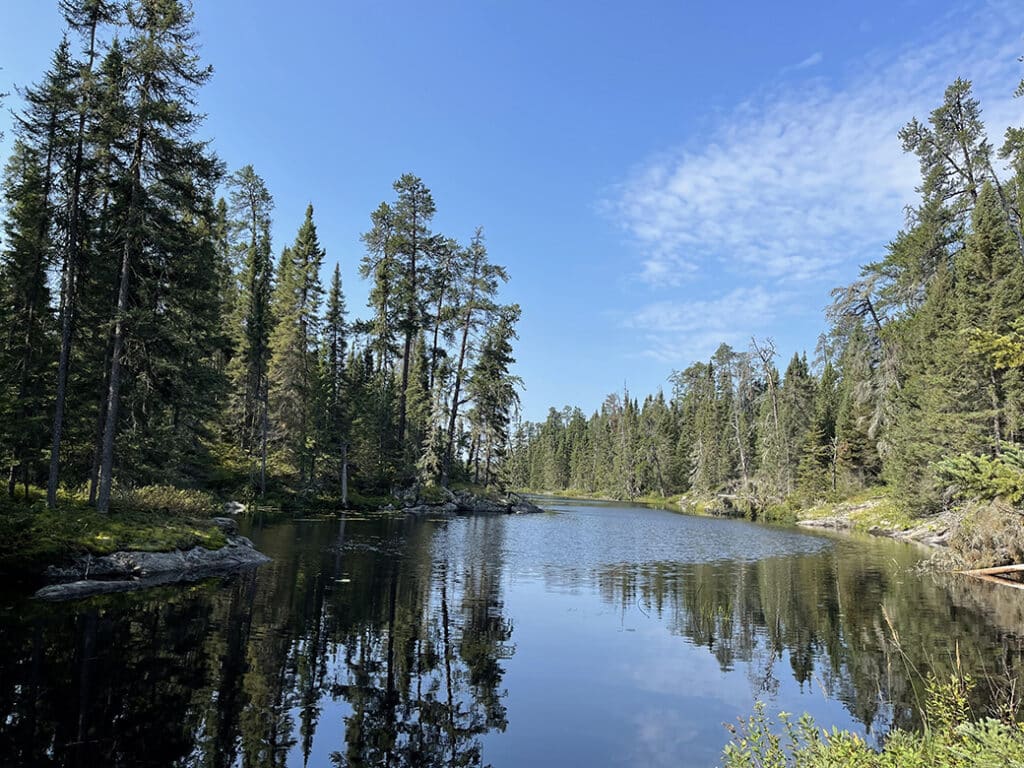
When and where you should launch
As a general rule, open water paddling in the BWCAW begins in mid-May at ice-out and continues well into October. The beginning and end of the season are wonderful times to visit because there are fewer visitors and no bugs. If you do visit outside of the hot summer months, please familiarize yourself with cold water safety. July and August are the busiest months and are great for swimming and water activities. If you visit during these peak times, consider choosing a less popular entry point and/or visit during a weekday to lessen the environmental impact of potential overuse.
There are more than 50 BWCA paddling entry points throughout the three-million-acre Superior National Forest, making it difficult to choose one perfect spot. You can start to narrow down your options by setting some goals for your day trip. Do you want to fish, and if so, what species would you like to target? Are you more into sightseeing? There are countless natural wonders throughout the million-acre wilderness waiting to be explored. Maybe you simply want to enjoy a relaxed day of paddling and go for a swim.
Many people add BWCA day trips onto an existing Northeast Minnesota vacation. Whether you’re camping in a state park, the Superior National Forest, or staying at a resort or vacation rental, start by researching the entry points near there. You can find more information than you’ll ever need—including trip reports—on BWCA.com.
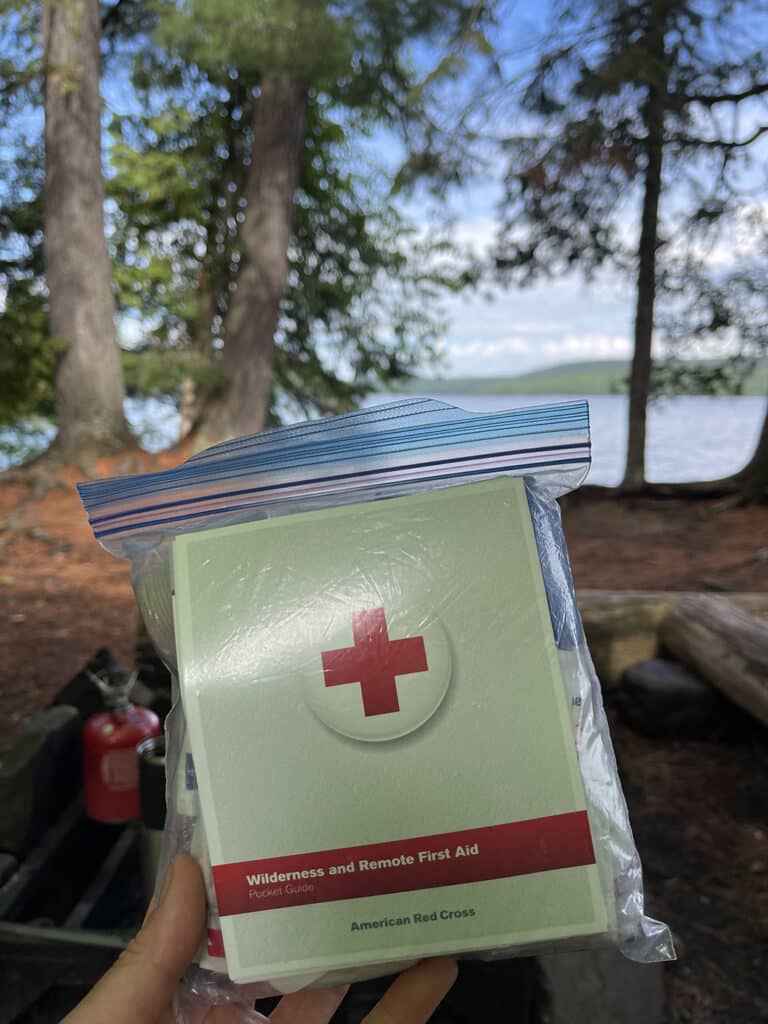
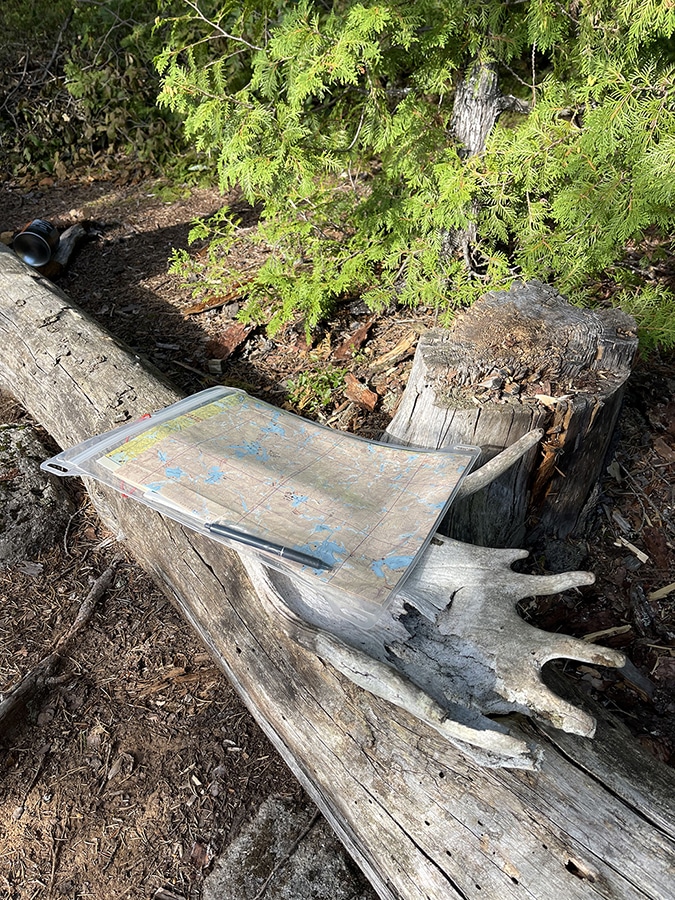
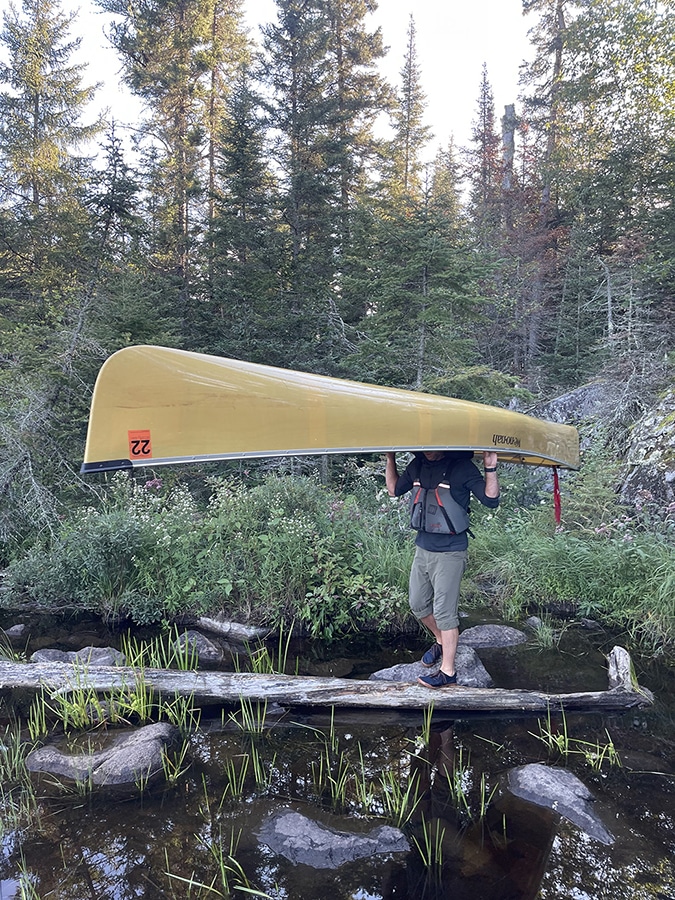
What you’ll need
The most essential piece of gear you’ll need for your BWCA day trip is a watercraft. Several BWCA lakes allow motors with restrictions. But on most lakes, you’ll need something to paddle—a canoe, kayak, or even a stand-up paddleboard. When portaging and traveling with my spouse, a canoe is our vessel of choice. You will also need paddles—one per person plus a spare. I remember reading somewhere, “The most experienced paddlers always wear their PFDs.” This is one of the truest things I’ve ever read about paddling. The more we’ve experienced, the more we understand the importance of never getting on the water without first strapping on your life jacket. All of these items can be rented from any of the outfitters serving the area.
In addition, you’ll need a map and the knowledge to read it. It might be a good idea to research navigation before your trip. You’ll also need to fill out a permit. All travel in the BWCAW—whether for a day or multiple nights—requires a permit. Day users can complete self-issued permits at the point of entry. If you’re planning to fish, be sure and bring a copy of your Minnesota fishing license.
Specific to paddling the Boundary Waters, you’ll want to consider your footwear. A contentious topic on discussion boards since everyone has a favorite. I personally swapped out footwear every year for half a decade until I finally found the perfect paddling and portaging shoes for my needs. If you’re heading out on a day trip, consider using something you already own that can get wet and muddy.
Finally, you’ll want to bring a day pack with the Ten Essentials. I already mentioned navigation. In addition, you should pack a small first-aid kit, sun protection, bug repellant, and a few repair items like a knife and duct tape. You’ll also want yummy things to eat and drink while out on your adventure. Cans and glass are prohibited in the BWCA so be sure to repackage those things into reusable plastic containers. I also recommend carrying something to purify water, like a small water filter or water purification tablets. Don’t forget the raingear and warm layers. The weather, especially along the shores of the world’s largest freshwater lake, is predictably irrational. It’s not uncommon to experience three seasons in a single day.
I imagine that most day packs are missing these final three essentials. That’s too bad because they’re incredibly inexpensive and could save your life. In addition to everything listed above, bring some sort of illumination in case you make a navigation error and have to paddle in the dark. I always carry a small zip lock bag with a lighter, waterproof matches, and a waterproof fire starter on each day trip I go on. And the last of the Ten Essentials is an emergency shelter. We have small emergency space blankets stuffed everywhere—our repair kit, first aid kits, and even in our PFDs.
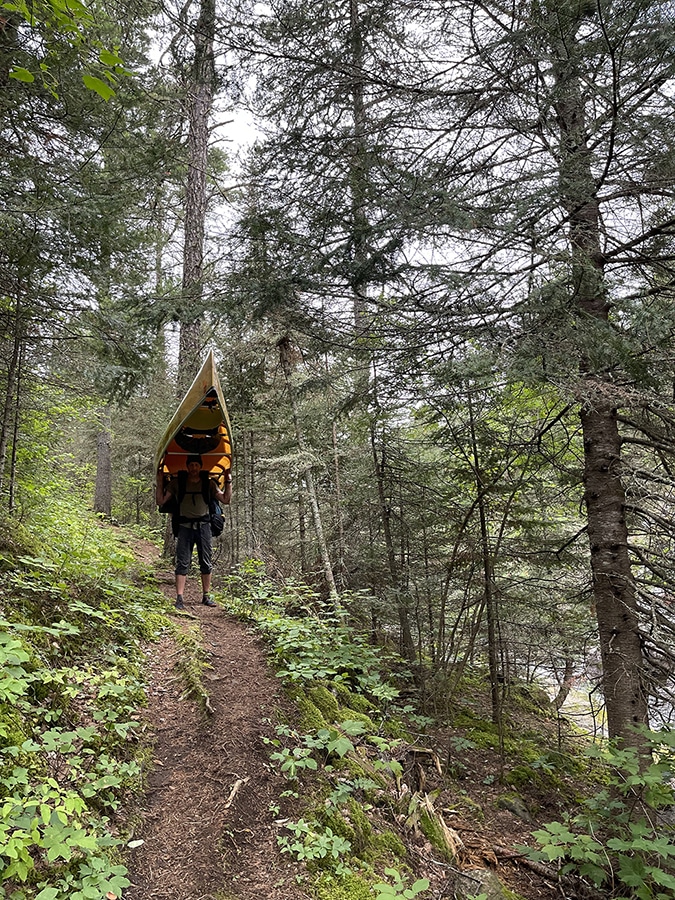
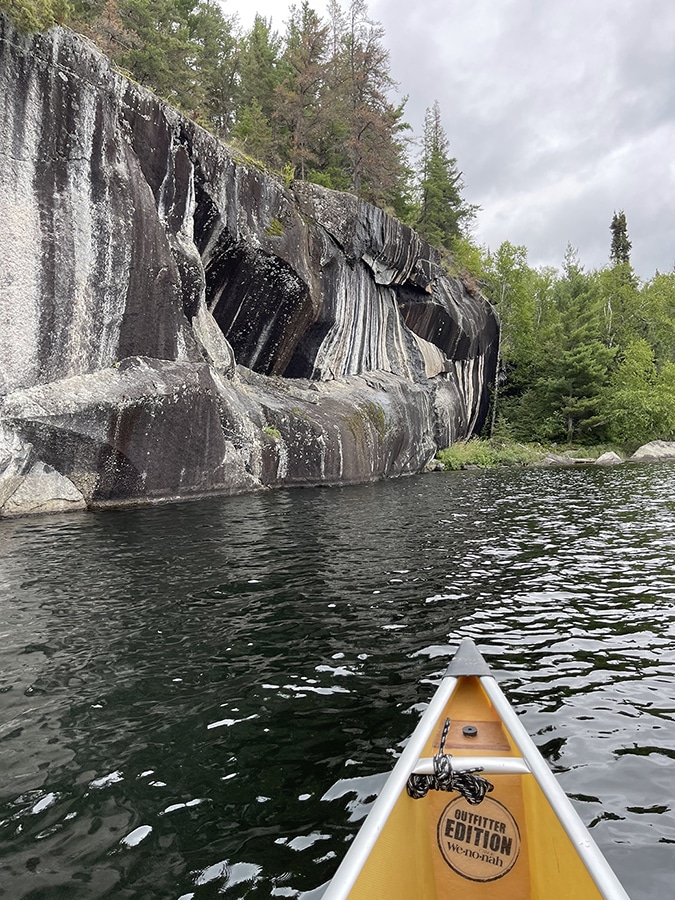
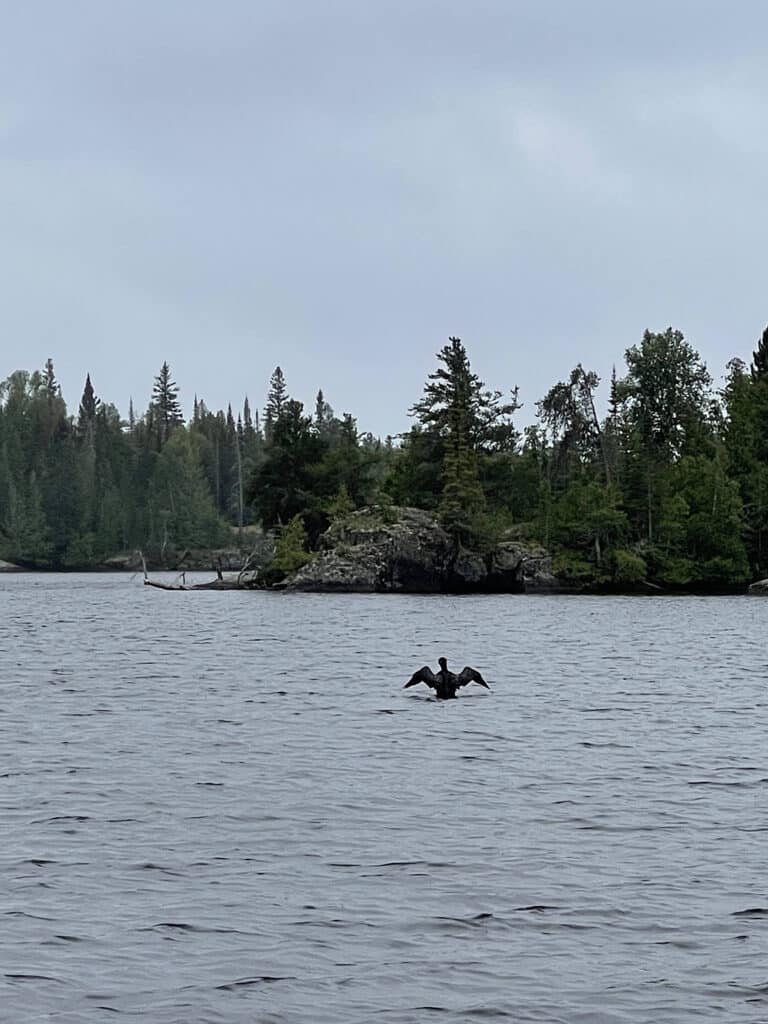
How to Leave No Trace on your BWCA day trip
I write about this a lot. Not so much because of the increased reports of violations in recent years. But because we didn’t understand the depth and breadth of these rules when we were first starting. You can learn more about the Seven Principles of Leave No Trace here.
You will find all of the rules and regulations specific to the BWCA on the back of your permit. It’s important to note that these rules and regulations are enforceable with a penalty of up to $5,000 and/or up to six months in jail.
In addition to completing a self-issued permit before entering the wilderness, ensure that there are no more than nine people and four watercraft in your party. If you have 10 or more people, you’ll have to break into two groups and travel separately. If you pack it in, you are required to pack it out. Do not leave cigarette butts in fire grates, wipes or feminine hygiene products in latrines, and always deposit live bait in the trash. Do not remove or deface cultural or historic artifacts and don’t take rocks, agates, plants, or other objects like antlers or bones. Leave them for the next explorers to enjoy. And finally, always take breaks away from trails and portages and avoid using campsites for day use.
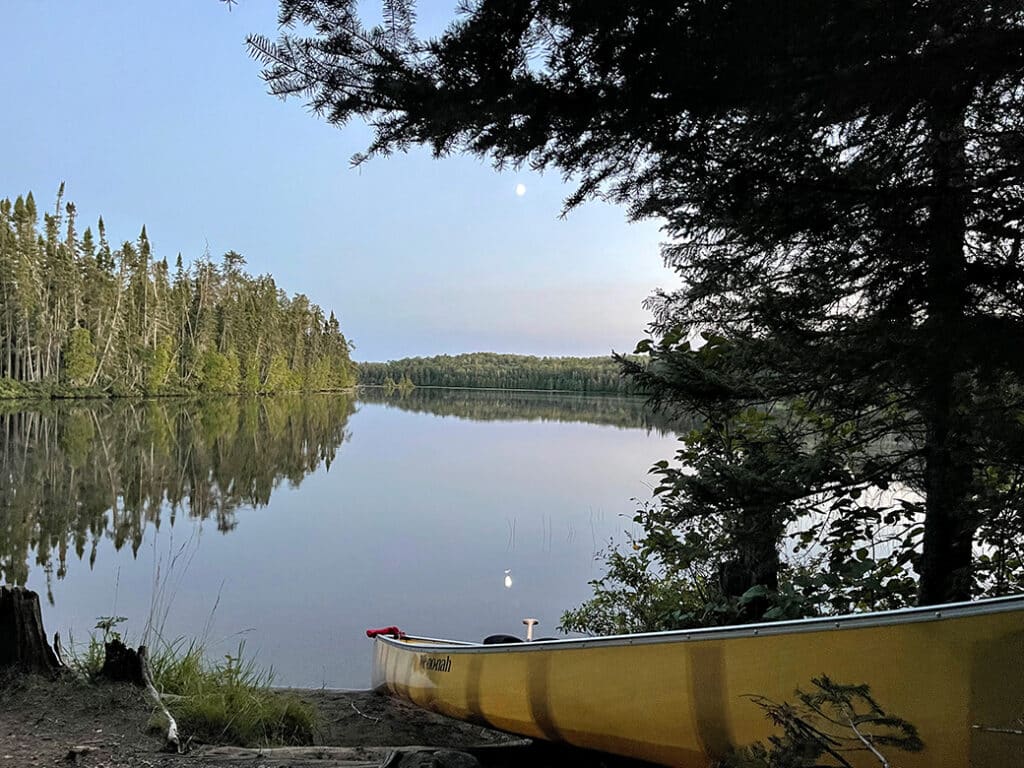
You can learn more about wilderness best practices below
BWCA Adventure Guide
Visiting the BWCA Video Series
Leave No Trave Free Online Course
There are few places in the world where you can experience the wild solitude and dark skies found in the Boundary Waters Canoe Area Wilderness. A BWCAW day trip is a great way to experience the magic of this special place without the gear, planning, and expertise needed for longer trips. By following the tips in this article and doing some research, you’re sure to enjoy an unforgettable adventure with memories to last a lifetime.
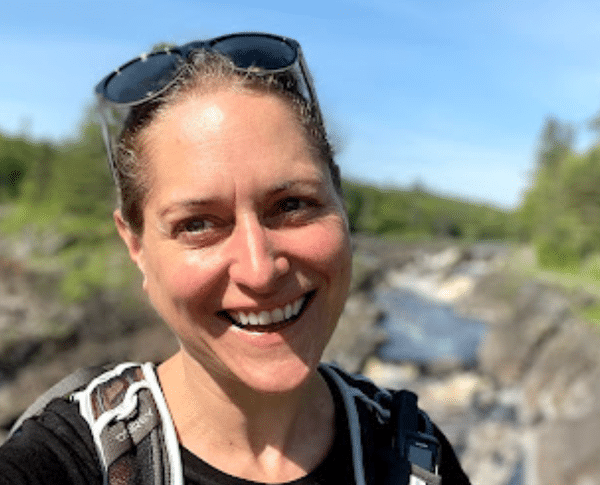
Holly Scherer is a Minnesota-based writer, photographer, outdoorswoman, and guide. She’s most at home in the great outdoors; camping, hiking, paddling, cycling, and gardening. When she’s not on an adventure, she and her husband live in the Twin Cities where they’re fond of saying, “home is where we store our outdoor gear.”

